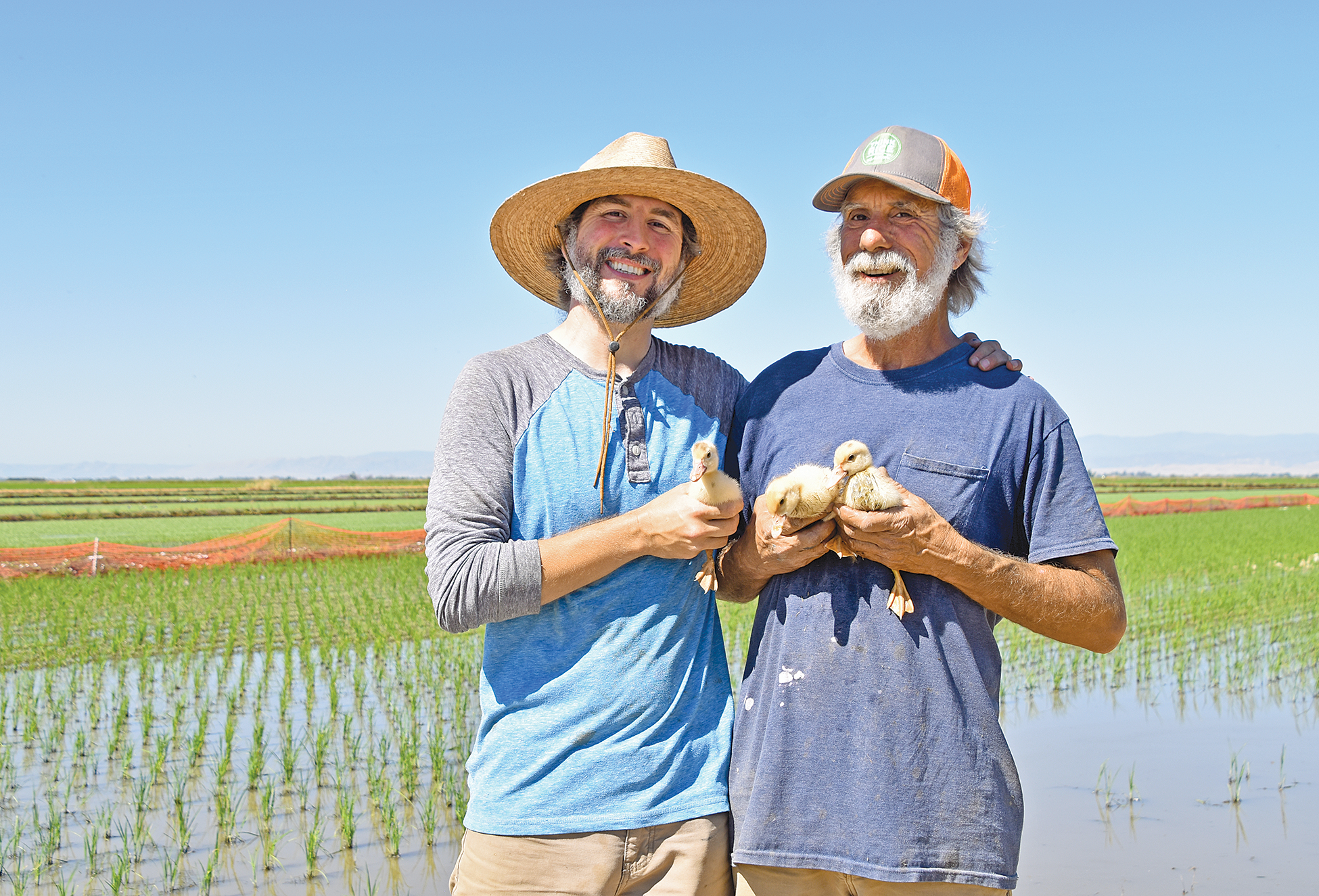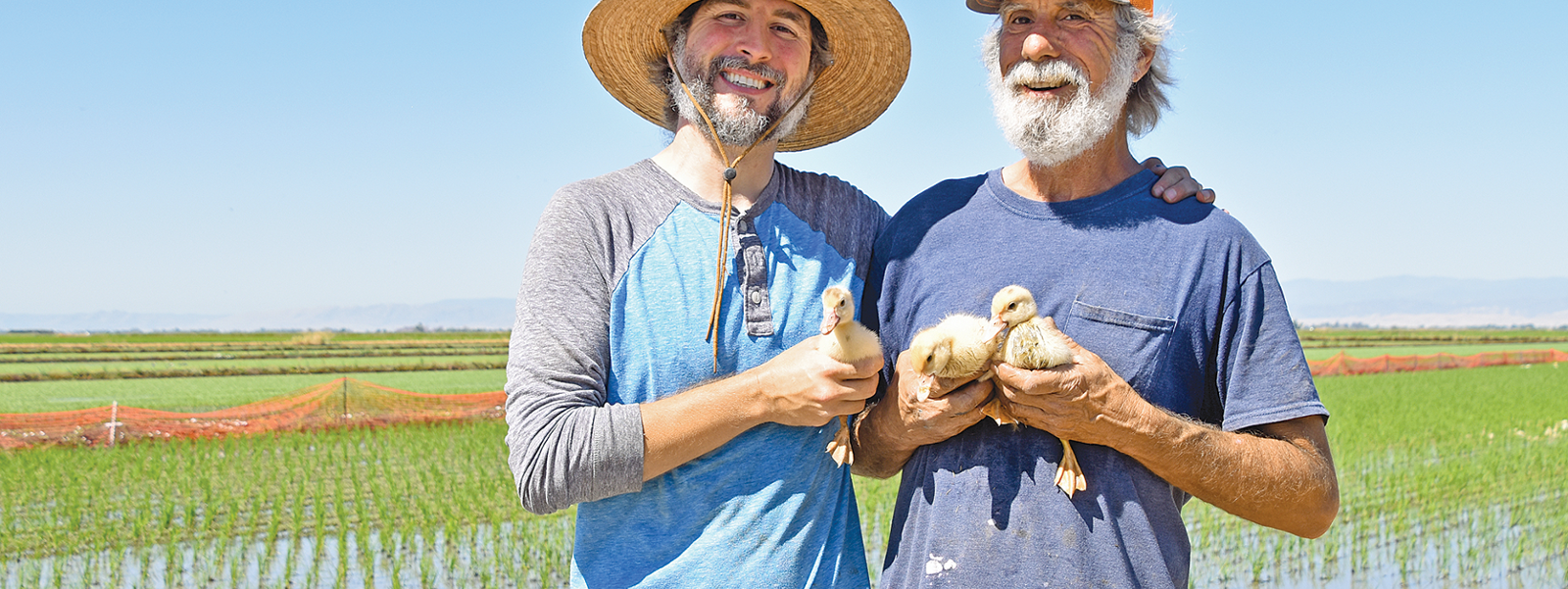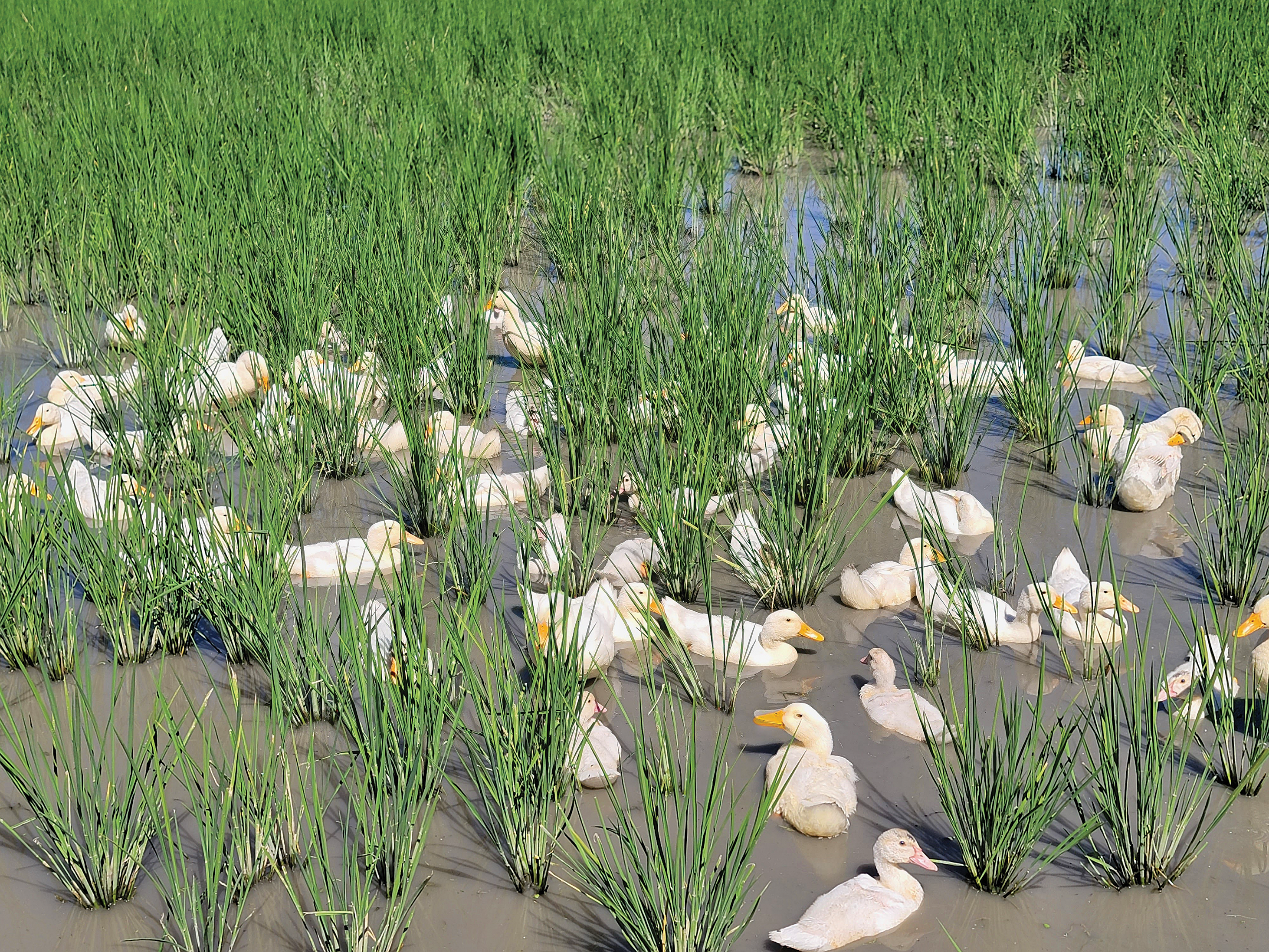'Duck Revolution' combines rice growing, raising ducks

Colusa County farmers Christopher Lopes, left, and his father, Bruce, use an integrated farming system to grow Omachi rice and raise ducks as part of a more resilient food system.
Photo/Vicky Boyd


Photo/Christopher Lopes
By Vicky Boyd
When Christopher Lopes mentions his family has ducks in their organic rice fields in Colusa County, many people envision the environmentally friendly practice of flooding harvested rice fields for winter waterfowl habitat.
But Christopher and his father, Bruce Lopes, are putting their own twist on the age-old Asian practice of aigamo, an integrated farming system that involves producing ducks and rice simultaneously in the same field.
“You build a more resilient food system when you have two crops together—the ducks and the rice,” Christopher Lopes said.
In 2015, he read “The One Duck Revolution,” a doctoral dissertation by Takao Furuno of Japan, and became obsessed with the system.
“Then the drought hit, and things weren’t going well on the farm,” Christopher Lopes said. “We needed to build a brand and figure out how to help keep my parents going with 60 acres of rice, which is pretty difficult to do.”
The Lopeses know of only one other farm with the dual production system in the United States—Boundbrook Farm in Vermont owned by Erik Andrus. While they credit Andrus for his mentorship in setting up their operation three years ago, the father-son team said they are still going through some trial and error to find a duck-rice system that works under California conditions.
“We literally make this up as we go,” Bruce Lopes said. “Our motto is: There are no problems, only solutions.”
Christopher Lopes added, “We just keep failing forward.”
Their free-range ducks have already gained a local following, thanks in part to Donna Garrison with the Butte County Local Food Network who put them in contact with potential customers.
“I just introduced them to a bunch of restaurant owners and chefs who use local food, and they sold out last year,” she said.
This year, the Lopeses plan to showcase their ducks with a donation of 20 birds for a Butte County Local Food Network and Butte Environmental Council fundraiser, where duck will be served five ways.
“All of these people are going to come because they like to eat duck,” Garrison said of the Nov. 11 event. “We’re also inviting all of the restaurant owners and chefs.”
The Lopeses, who farm under the Lopes Family Farms banner, have embraced aigamo in its entirety. They use a machine imported from China that creates trays of rice transplants.
Similar to flats used for producing landscape ground cover, soil-filled trays are filled with soaked, pre-germinated rice seed. The Lopeses put the trays in a shallowly irrigated plastic-lined alleyway to keep them moist as the plants grow. Once the plants reach 4 to 6 inches, which took about four weeks this year, they use a mechanical transplanter to separate the rice plants.
This year in their duck-rice field, they are growing organic Omachi, an heirloom short-grain Japanese rice variety coveted for sake. Already, San Francisco sake brewer Sequoia Sake has expressed interest in the rice.
A few days after planting in mid-June, the Lopeses received a shipment of 560 mostly Muscovy ducklings from Metzer Farms in Gonzales.
At night, the Lopeses keep the birds housed and protected in the “duck shack.” As the sun rises, the Lopeses use grain as treats to train the birds to walk a short distance to a nearby rice field.
They’ve fenced off the field to keep the birds confined during the day. Come nighttime, they lead their charges back to the duck shack.
For the first two weeks, the newly hatched ducklings focus on eating insects. As they grow, the birds turn to consuming weeds and even scum. In the process, they produce nutrients, allowing the Lopeses to reduce their use of organic fertilizers by about one-third.
What makes the system work is the ducks won’t eat rice because it contains silica and the leaves are sharp, Bruce Lopes said. As they waddle through the plants or poke around for weeds, their actions strengthen the rice stems and create shorter, bushier plants.
The Muscovy ducks take about 10 to 12 weeks to reach a marketable weight. At the same time, the Lopeses factor in a 90-day food safety preharvest interval that requires fields be livestock-free.
The birds are moved to another pond where they remain a few weeks before they are sent for processing in Stockton.
A veteran of more than 20 years growing certified-organic rice, Bruce Lopes said the duck-rice system can potentially save significant amounts of water at planting and during the season. The farm used only 1 inch of water to keep the transplant trays moist for four weeks before they move the rice plants into the field.
“That water savings in the first month with using the tray method is just insane,” Bruce Lopes said.
Conventional rice growers traditionally flood fields before planting seed, and then maintain 3 to 4 inches of water until fields are drained before harvest. During the season, they use herbicides to manage weeds.
With a shortage of organically approved herbicides, organic producers rely on a deep flood of as much as 10 to 12 inches to suppress weeds during the season.
Bruce Lopes said with the integrated system, they need only a few inches of water because the birds control the weeds. He said the duck-rice field uses about one-third the water of his solely organic rice fields.
(Vicky Boyd is a reporter in Modesto. She may be contacted at vlboyd@att.net)




